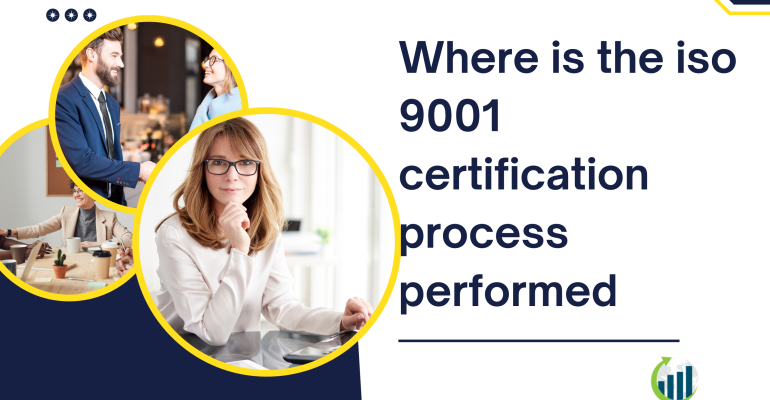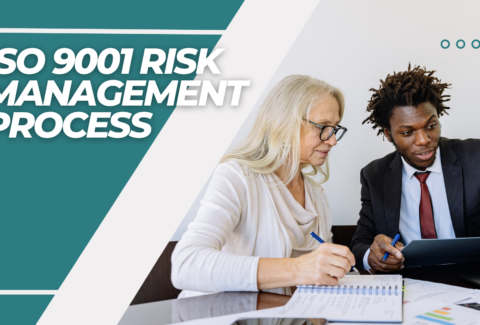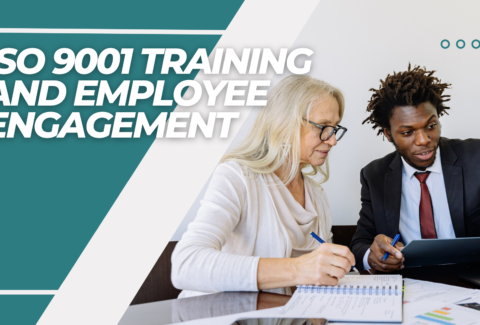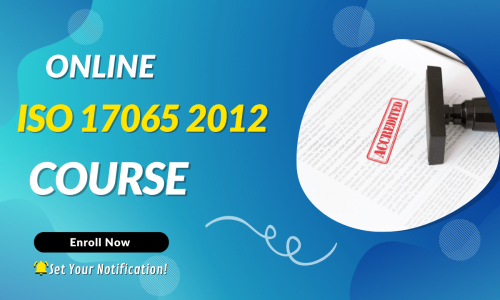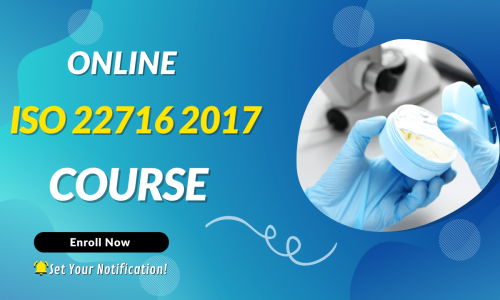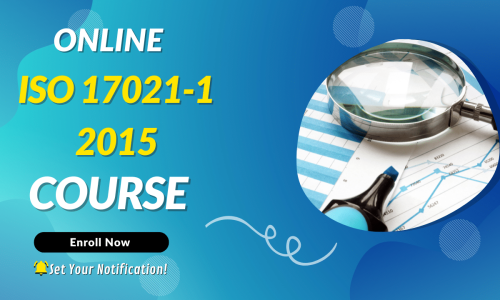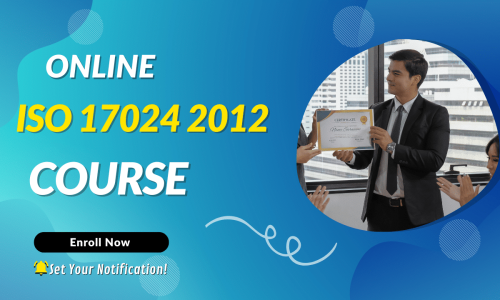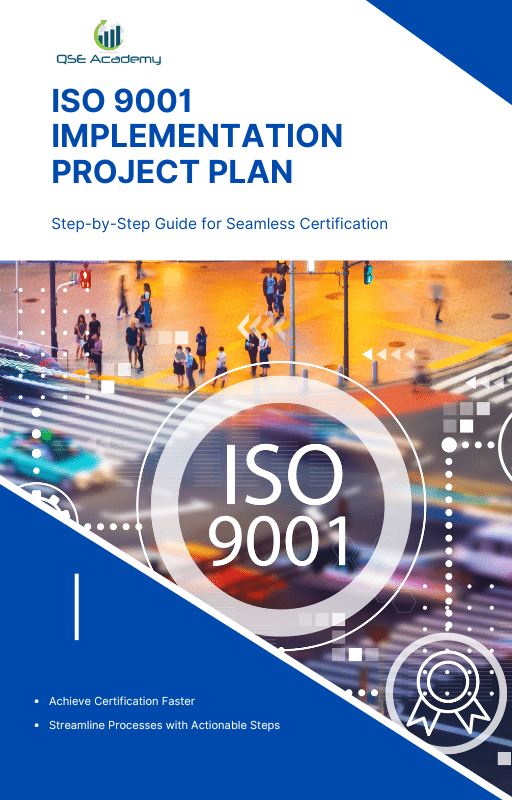Where is the iso 9001 certification process performed?
Where is the iso 9001 certification process performed?
Have you ever wondered where the ISO 9001 certification process is performed? It’s a great question, especially if you’re exploring ways to elevate your business’s quality standards. ISO 9001 certification is all about proving that your organization has a solid quality management system in place, but understanding the “where” of it can feel a bit tricky at first.
Here’s the thing: the ISO 9001 certification process doesn’t happen in one specific place, like a government office or a central testing center. Instead, it happens where your business operates. Whether you’re running a manufacturing plant, a corporate office, or even offering remote services, the certification process is tailored to fit your organization’s unique environment. Pretty cool, right?
By the way, the answer to “where is the ISO 9001 certification process performed” isn’t just about a physical location. It’s also about how certification bodies work with you—sometimes on-site, sometimes remotely—to ensure your systems meet the global standards. It’s all about flexibility and adapting to the way your business operates.
So, if you’re curious about getting certified and wondering where this all takes place, don’t worry. It’s not as complicated as it sounds! Let’s dive in and explore how this process works in different settings. You’ll see that ISO 9001 certification is closer—and more accessible—than you think.
Understanding ISO 9001 Certification
Before we dive deeper into where the ISO 9001 certification process is performed, let’s first get a handle on what ISO 9001 certification actually means. Don’t worry—it’s not as overwhelming as it might sound!
At its core, ISO 9001 certification is all about ensuring your business follows internationally recognized standards for quality management. Think of it as a seal of approval that tells the world, “Hey, we know how to keep things running smoothly, consistently, and with a focus on customer satisfaction.” Whether you’re making products or providing services, ISO 9001 is designed to fit businesses of all shapes and sizes.
Now, you might be thinking, “Okay, but how does this tie into where the ISO 9001 certification process is performed?” Well, the process is all about your business. Certification bodies—the experts who conduct the audits—actually come to you, either in person or remotely, to assess your quality management system. This means the certification process happens right where your team works, your products are made, or your services are delivered.
Another thing to keep in mind is that ISO 9001 isn’t a one-size-fits-all kind of deal. The process is tailored to your organization’s unique setup. If you run a manufacturing plant, the certification process might involve reviewing your production lines. If you operate a service-based business, the focus will be on your processes and customer interactions. Wherever your business is located, that’s where the ISO 9001 certification process is performed—and it’s all designed to fit your specific needs.
Understanding this makes the whole idea of certification feel a lot more manageable, doesn’t it? Knowing that the process happens right in your workspace—or even virtually—helps take away some of the mystery and makes it easier to prepare. Whether you’re based in a bustling city, a small town, or operating entirely online, ISO 9001 certification meets you exactly where you are.
Where is the ISO 9001 Certification Process Performed?
So, let’s get to the heart of the question: Where is the ISO 9001 certification process performed? The short answer? Right where your business operates! But let’s unpack that a little more because there’s more to it than just geography.
On-Site at Your Business Location
For most organizations, the ISO 9001 certification process starts right at your business premises. Why? Because this is where your actual work happens—it’s where your team creates products, delivers services, and interacts with customers. During the certification process, auditors from an accredited certification body will visit your site to evaluate how your quality management system operates in the real world. They’ll look at things like how processes are documented, how risks are managed, and how your team ensures customer satisfaction.
The great thing about this approach is that it’s tailored to your business. For example, if you run a factory, the audit might focus on your production lines, equipment, and quality checks. If you’re in retail or hospitality, it might center on customer interactions, inventory management, or service delivery. Wherever your operations happen, that’s where the ISO 9001 certification process is performed.
Remote Audits: A Modern Alternative
In today’s digital world, remote audits have become an increasingly popular option. Thanks to advancements in technology, certification bodies can now evaluate your processes without physically being on-site. This is especially useful for companies that operate in multiple locations, have remote teams, or are based in areas that are hard to access.
During a remote audit, the certification team might use video calls, document sharing, and digital tools to review your quality management system. This means the certification process can be performed wherever your data and processes are accessible—even if that’s from a home office or a coworking space. Isn’t it amazing how flexible the process has become?
The Role of Certification Bodies
Another key aspect of where the ISO 9001 certification process is performed involves the certification bodies themselves. These are the third-party organizations accredited to conduct ISO 9001 audits and issue certifications. Certification bodies often have regional offices or work with local auditors who can visit your site or conduct remote assessments. So, no matter where your business is located, there’s always an expert ready to assist you with the process.
The beauty of ISO 9001 certification is that it adapts to your organization’s unique circumstances. Whether the process happens in your office, your factory, or even through a laptop screen during a remote audit, the goal remains the same: ensuring your quality management system meets the high standards of ISO 9001. Now that you know where the ISO 9001 certification process is performed, you can see how accessible and flexible it really is!
Factors Influencing Where the ISO 9001 Certification Process is Performed
By now, you’ve probably realized that where the ISO 9001 certification process is performed depends a lot on your specific organization. But what exactly influences this? Let’s explore a few key factors that play a role in determining how and where your certification journey takes place.
1. Your Industry and Operations
Different industries have different needs, and this directly affects where the ISO 9001 certification process is performed. For example, if you’re in manufacturing, auditors will want to observe your production lines, inspect your equipment, and review how quality is monitored during production. This means the certification process is likely to take place on-site at your factory or workshop.
On the other hand, if you’re running a service-based business, like a consultancy or an IT firm, the focus shifts to your processes, documentation, and customer interactions. Auditors might spend more time in your office (or even virtually) reviewing workflows and talking to your team. The point is, your industry shapes the process and determines where the audits happen.
2. Geographic Location
Another factor is your business’s geographic location. If you’re based in a single location, the certification body’s team will likely conduct on-site audits at your premises. However, if your organization operates across multiple sites—like regional offices, warehouses, or factories—the certification process may be spread out across these locations. In such cases, auditors might visit each site or use remote audits for certain areas.
For businesses in remote or hard-to-reach areas, technology can step in. Many certification bodies now use virtual tools to conduct remote audits, making it easier for businesses to complete the process no matter where they’re located.
3. Your Organization’s Readiness
One of the biggest factors influencing where the ISO 9001 certification process is performed is how prepared your organization is. Before the actual certification audit, your team will need to prepare by implementing ISO 9001 standards, documenting processes, and conducting internal audits. Much of this preparation happens right at your business location, so when the certification body arrives, they’re able to assess everything in context.
Sometimes, parts of the preparation or even the audits themselves can take place remotely, especially if your business uses cloud-based systems to manage documentation and workflows. This means the certification process can often be as flexible as your operations.
4. Technological Advancements
Thanks to advancements in technology, the question of where is the ISO 9001 certification process performed has become more adaptable than ever. Virtual audits allow businesses to share documents, processes, and even live walkthroughs of their facilities online. This option is particularly useful for organizations with hybrid or remote teams, making the certification process more accessible.
5. Certification Body Requirements
Lastly, where the process happens can also depend on the certification body’s requirements. Some certification bodies may prefer on-site audits for certain industries, while others may use a combination of remote and in-person assessments. It’s always a good idea to discuss this with your chosen certification body so you know exactly what to expect.
The flexibility of the ISO 9001 certification process is what makes it so effective. Whether the audits happen at your office, your factory, or through a screen, the goal is always the same: ensuring your quality management system meets international standards. Now that you know what influences where the ISO 9001 certification process is performed, you can feel confident in preparing for the next steps!
Benefits of Knowing Where the ISO 9001 Certification Process is Performed
Understanding where the ISO 9001 certification process is performed isn’t just a curiosity—it’s actually a big help when preparing for certification. Knowing the “where” can give you a clearer picture of what to expect, how to plan, and how to make the process as smooth as possible. Let’s break down some key benefits.
1. Helps You Prepare Your Business Environment
When you know where the ISO 9001 certification process is performed, you can focus on getting the right spaces ready for audits. For example, if the process is happening on-site at your office, you’ll want to ensure all your documents are organized, your teams are informed, and your workspaces reflect the quality processes you’ve implemented.
On the other hand, if part of the process is conducted remotely, you can focus on setting up virtual access to your files and systems. Whether it’s preparing a meeting room or a video call, understanding the “where” ensures you’re not caught off guard.
2. Ensures Key People Are Involved
Knowing where the ISO 9001 certification process is performed helps you plan who needs to be involved and when. For on-site audits, you can arrange for key employees to be present—like department heads or team leads—so they can answer auditors’ questions.
If the process includes remote elements, it’s an opportunity to bring in your IT team to make sure systems run smoothly. Either way, being clear on the “where” allows you to coordinate the right people at the right time.
3. Reduces Unnecessary Stress
Let’s face it: the idea of certification can feel a little intimidating. But when you know exactly where the ISO 9001 certification process is performed, it demystifies the whole experience. Suddenly, it’s not this abstract, far-off event—it’s something tangible, happening right in your workspace or through tools you already use. This clarity can go a long way in reducing stress and boosting confidence.
4. Helps You Save Time and Resources
When you understand the locations involved in the certification process—whether it’s entirely on-site, fully remote, or a mix of both—you can allocate resources more effectively. For instance, you’ll know if you need to dedicate a specific area for the auditors to work, or if you need to ensure stable internet for remote sessions. This kind of preparation saves time and helps everything run smoothly.
5. Builds a Clear Roadmap to Certification
Finally, knowing where the ISO 9001 certification process is performed allows you to create a clear roadmap for success. You’ll have a step-by-step understanding of where the audits will happen, what’s expected, and how to prepare each step of the way. It’s like having a map for a road trip—you know exactly where to go, so there’s no confusion or unnecessary detours.
The beauty of ISO 9001 certification is that it meets you where you are—literally. Whether the process happens on-site, remotely, or across multiple locations, knowing the “where” ensures you’re in control of your preparation. With this understanding, you can approach certification with confidence, knowing that your business is ready to shine.
Common Misconceptions About Where the ISO 9001 Certification Process is Performed
Let’s clear up some of the confusion about where the ISO 9001 certification process is performed. There are quite a few myths floating around that can make the process seem more complicated than it actually is. Don’t worry—we’re here to break it down and set the record straight.
1. “ISO Certification Only Happens in Big Offices or Factories”
This is one of the biggest misconceptions. Many people assume that where the ISO 9001 certification process is performed is limited to large industrial facilities or corporate headquarters. But here’s the truth: ISO 9001 is flexible and applies to organizations of all sizes and industries. Whether you’re running a startup from a coworking space, managing a remote team, or operating a manufacturing plant, the process meets you right where your business operates.
Auditors assess your quality management system based on your specific setup—not someone else’s. So, whether your workspace is a bustling office, a small studio, or even a home office, the certification process is tailored to your business.
2. “It’s All Done in a Certification Body’s Office”
Some people think they need to go to a certification body’s office to complete the process. That’s not how it works. The certification body comes to you. The audits are carried out at your site or, in some cases, remotely using virtual tools. This ensures that the process focuses on your real-world operations, rather than just theoretical paperwork.
Remember, where the ISO 9001 certification process is performed is about your business environment, not theirs.
3. “Remote Businesses Can’t Get Certified”
Here’s another myth that needs busting: some believe that businesses operating remotely or online can’t get ISO 9001 certified because there’s no physical location to visit. Not true! With the rise of remote audits, certification is now more accessible than ever for businesses without traditional office spaces. The process can be adapted to fit online operations, with auditors reviewing digital workflows, cloud-based systems, and virtual processes.
So, if your team is fully remote, rest assured—where the ISO 9001 certification process is performed can include virtual assessments designed specifically for businesses like yours.
4. “It’s the Same Process Everywhere”
Another misconception is that the certification process looks the same for every business. In reality, it’s highly customizable. The process considers your industry, location, and operations. For example, a hospital might focus on patient safety protocols, while a tech company emphasizes software development practices. This flexibility means that where the ISO 9001 certification process is performed and how it’s executed will vary depending on your unique setup.
5. “It’s a One-Time Event in One Place”
Many people think ISO 9001 certification is a one-and-done event, but that’s not entirely true. The certification process includes ongoing audits and re-certifications to ensure you maintain compliance. While the initial audit might focus on a specific site or process, follow-up assessments could happen in other locations or even remotely.
Understanding these misconceptions helps demystify the certification process and shows just how adaptable it is. Whether your business operates in a single office, across multiple locations, or entirely online, the flexibility of ISO 9001 ensures it works for you. Knowing where the ISO 9001 certification process is performed is about understanding that it’s not tied to a fixed location—it’s designed to meet you wherever your business thrives.
Conclusion: Where is the ISO 9001 Certification Process Performed?
So, where is the ISO 9001 certification process performed? By now, it’s clear that the answer isn’t one-size-fits-all—it’s flexible, adaptable, and tailored to your business’s unique setup. Whether your operations take place in a bustling office, a manufacturing plant, or even entirely online, the ISO 9001 certification process happens wherever your business works best.
This flexibility is what makes ISO 9001 certification so accessible for businesses of all sizes and industries. The process is designed to meet you where you are—whether that’s through on-site audits, remote assessments, or a mix of both. The key is ensuring that your quality management system is evaluated in the context of your real-world operations.
Knowing where the ISO 9001 certification process is performed also helps you prepare with confidence. When you understand how the process aligns with your workspace, you can plan effectively, involve the right people, and create an environment that reflects the quality standards you’ve worked so hard to achieve.
In the end, ISO 9001 certification isn’t about fitting your business into a rigid mold. It’s about recognizing the unique way you operate and ensuring your systems align with internationally recognized best practices. So, whether your workspace is a local office, a remote setup, or a combination of locations, the ISO 9001 certification process is designed to work for you.
Ready to take the next step? The journey to ISO 9001 certification starts right where you are—and it’s closer and more achievable than you think!
Looking for More Resources on ISO 9001?
Looking for ISO 9001 Resources Tailored to Your Industry?
If this article helped clarify ISO 9001, take the next step with our industry-focused tools designed to simplify your certification journey:
📦 ISO 9001 Documentation Kits by Industry: Whether you’re in manufacturing, construction, consulting, or healthcare — we have complete, ready-to-use documentation tailored for your sector.
🎓 Online ISO 9001 Training: Learn how to implement ISO 9001 effectively with our easy-to-follow video lessons, real-world examples, and practical exercises.
📋 ISO 9001 Checklist: Download our step-by-step checklist to ensure your QMS meets all the 9001:2015 requirements from start to finish.
These resources are crafted to save you time, reduce stress, and help you achieve certification with confidence. Choose your industry and start now!

make ISO standards less intimidating and more approachable for everyone.
Whether it’s ISO 9001, ISO 22000, or the cosmetics-focused ISO 22716,
I’ve spent my career turning complex jargon into clear, actionable steps
that businesses can actually use. I’m not here to call myself an expert—I prefer “enthusiast” because I truly love what I do.
There’s something incredibly rewarding about helping people navigate food safety and quality management systems
in a way that feels simple, practical, and even enjoyable.
When I’m not writing about standards, you’ll probably find me playing Piano 🎹, connecting with people, or diving into my next big project💫.
- I’m an engineer specialized in the food and agricultural industry
- I have a Master’s in QHSE management and over 12 years of experience as a Quality Manager
- I’ve helped more than 15 companies implement ISO 9001, ISO 22000, ISO 22716, GMP, and other standards
- My clients include food producers, cosmetics manufacturers, laboratories, and service companies
- I believe quality systems should be simple, useful, and efficient
- Outside of work, I play piano and love learning something new every day
Let’s make ISO less about stress and more about success! 🙏

